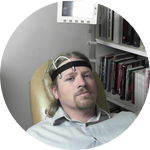Project Results
About This Project
We have developed a protocol to augment human sight to see into the near infrared range through human formation of porphyropsin, the protein complex which grants infrared vision to freshwater fish.
Retinal, or Vitamin A (A1), which is found bound to opsin proteins is a keystone of the visual pathway. The cone cells are granted sharp color vision by the complex photopsin. The rod cells which provide us with night vision and recognition of movement do so utilizing rhodopsin. Both of the complexes consist of a type of protein bound to retinal. Porphyropsin differs from this in that it doesn't use retinal, but rather a derivation called 3,4-dehydroretinol, or Vitamin A2 (A2).
The human body is fully capable of metabolizing and using A2; unfortunately the proteins which allow for transport through cell membranes have nearly 4 times the affinity for A1 compared to A2. We theorize that this can be overcome through a stringent Vitamin A1 restricted diet, supplemented with Vitamin A2.
Ask the Scientists
Join The DiscussionWhat is the context of this research?
Can human sight be augmented to see into the near infrared range through human formation of porphyropsin, the protein complex which grants infrared vision to freshwater fish?
What is the significance of this project?
While the ability to see outside the normal range of human perception is, in of itself, fairly exciting, being able to do so without cumbersome electronic equipment is doubly so.
The research results will be free, open source, and replicable by the layperson.
We are also hoping to use this study as a proof of concept to continue working on a more long term modification to human vision that doesn't rely on dietary restrictions / supplementation.
What are the goals of the project?
Funding will be used to purchase the equipment and parts needed for data acquisition. The collection of meaningful data is of utmost importance in all research, and your contribution will provide access to an electroretinograph; a device which is capable of measuring the changes which occur within the test subjects eyes. This data will be compared to that acquired from the control subjects in order to determine the range of deviation.
Funding will also be used to either purchase adequate quantities of Vitamin A2, or the reagents needed in order to produce it if this is determined to be more cost effective.
Budget
The majority of the funds will go towards the design, purchase, and fabrication of data collection equipment. The experiment to be performed will require monitoring of visual spectrum shifts over a period of 6 months. The four of us who will be performing the experiment live in different states and have other obligations that make it unfeasible to remain at one location for the duration of the experiment. As a result, we have trimmed the design of our testing equipment to be as inexpensive as possible, and will assemble one for each subject.
The second part of the funding goes towards the Vitamin A2 supplement. This is not something one can purchase from a standard store and we are exploring extracting it from the livers of freshwater fish, or purchasing a small amount from a reliable chemical supplier.
Endorsed by
Meet the Team
Affiliates
Team Bio
We are a group of research minded individuals from a variety of backgrounds interested in exploring non-institutional open source science. We are interested everyone having access to the research materials and tools that are usually only accessible to large organizations like universities. Our team consists of professionals in research, the health care industry, and technical design.Science for the Masses
We are a group of research minded individuals from a variety of backgrounds interested in exploring non-institutional open source science. We are interested everyone having access to the research materials and tools that are usually only accessible to large organizations like universities. Our team consists of professionals in research, the health care industry, and technical design.
Peyton Rowlands
I've always wanted to be an engineer. My passion is, has been, and always will be taking dry scientific data from textbooks and research papers and transforming it into real world applications that improve the lives of the people around me. My job is in manufacturing; but my work, my life's work, is to improve the human condition not only by using science, but by making available the tools necessary to engage in science available to anyone that wants them.
Gabriel Licina
I am an independent researcher and consultant working on various projects within the fields of material sciences, microbiology, and mammalian cell biology.
I am passionate about levering biotechnologies to repair ecosystems and improve the lives of the people in them.
Current projects run the gamut from a HSV therapy that is in animal testing, to yeast that produce proteins that can be formed into new biomaterials.
Additional Information
The Porphyropsin Visual System.
http://www.ncbi.nlm.nih.gov/pubmed/19873132
Carotenoids and Retinoids in Human Nutrition
http://www.ncbi.nlm.nih.gov/pubmed/1734916
Metabolism and secretion of retinol transport complex in acute renal failure
http://www.ncbi.nlm.nih.gov/pubmed/2066679
A membrane receptor for retinol binding protein mediates cellular uptake of vitamin A
http://www.ncbi.nlm.nih.gov/pubmed/17255476
Vitamin A uptake from retinol-binding protein in a cell-free system from pigment epithelial cells of bovine retina. Retinol transfer from plasma retinol-binding protein to cytoplasmic retinol-binding protein with retinyl-ester formation as the intermediate step
Project Backers
- 78Backers
- 101%Funded
- $4,060Total Donations
- $52.05Average Donation





